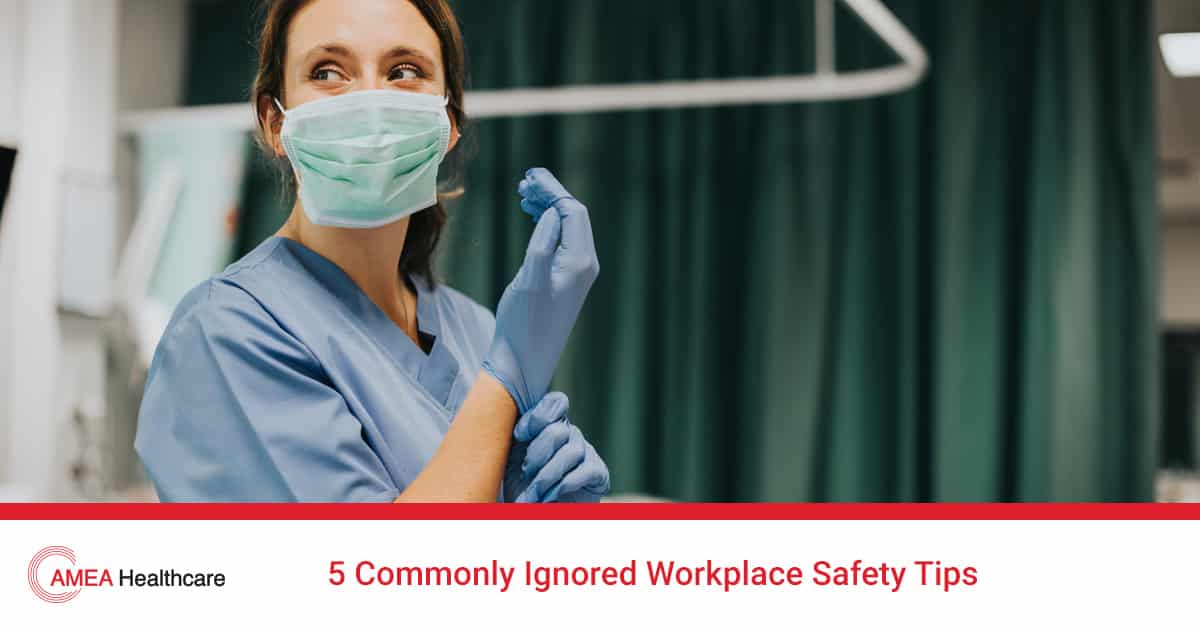
This June is the 25th anniversary of National Safety Month. The goal of National Safety Month is to improve safety awareness in communities, homes, and work – which makes it the perfect time to reevaluate your own workplace safety habits.
As a healthcare employee, you’re more likely to encounter danger in the workplace than, say, someone with a desk job. You’re faced with unpredictable patients, high stress, and long hours, among other risk factors. While it’s your employer’s job to enforce safety measures, there are certain steps you can take to keep yourself safe, too.
Here are 5 easy ways to protect yourself at work:
1. Keep your space clean
In a healthcare setting, it’s important to maintain a clean workplace – not just for the sake of cleanliness, but for your own safety. Consider all the hazardous items you deal with every day – sharp objects, medications, bandages contaminated with blood or body fluids. Make sure to dispose of these items properly and tidy up after yourself. Doing so will help you and your coworkers avoid a messy accident.
2. Work in pairs
Buddy systems aren’t just for school kids. They’re also super helpful in the workplace. A partner can share your physical and mental workload, so you don’t get overwhelmed or tired. Accidents are much less likely to happen when you have a buddy to support you.
3. Take regular breaks
Frequent breaks keep you refreshed and alert. They can also help you slow down and take a breather if you’re dealing with a particularly stressful patient or situation. Try to schedule regular breaks by setting a reminder on your phone or tablet. Aim to take one every hour or two, even if it’s just for 10 minutes. Also, try to incorporate a little physical activity, like walking or stretching, into your breaktime to keep your body moving.
4. Pay attention to your posture
Whether you’re sitting or standing all day, good posture helps protect your body from long-term damage. Bad posture can lead to a whole host of health issues, including headaches, back pain, and neck tension. Focusing on good posture can help you stay fit and nimble for years to come.
5. As a quick reminder, here’s what good posture looks like:
- Your chin is parallel to the floor
- Your shoulders are even
- You have a neutral spin
- Your abdominal muscles are tight
- Your hips and knees are even
- Your body weight is evenly distributed
Minimize stress
Know your own stress triggers and indicators so you can address them early on. Signs of stress can range from purely emotional – like irritability or anxiety – to more intense physical symptoms – like poor immunity and insomnia. Having healthy ways to manage stress – like exercising, meditating, or talking to a therapist – can help you keep stress to a minimum.
Are You Looking For A New Healthcare Job?
At AMEA Healthcare, we’re committed to placing you with a company that puts you first – as a person, not just a worker. We’ll help you find a position and company that fits your lifestyle, with the shifts, location, and workplace culture you’ve been looking for. Apply to one of our open positions today.

